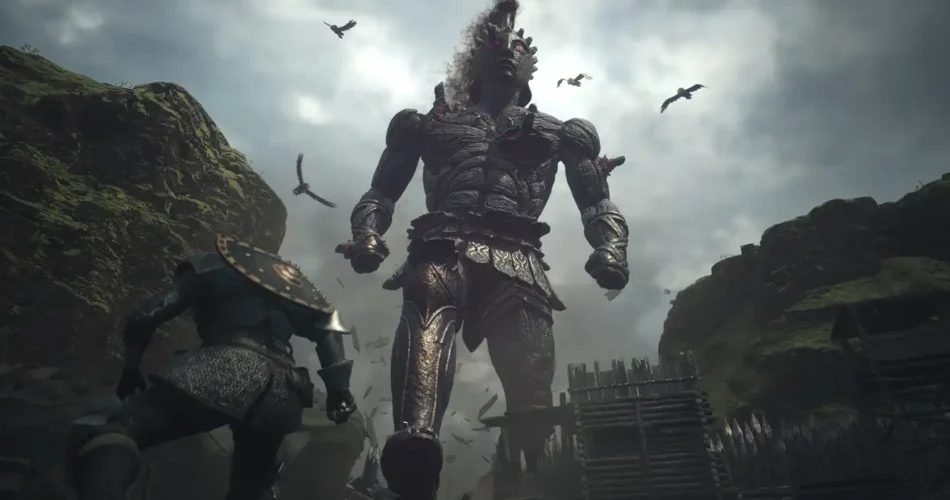It’s astounding that Dragon’s Dogma 2 actually exists.
Reflecting on the original Dragon’s Dogma is almost surreal. Even upon its release in 2012, it diverged from typical open-world RPG norms with its unconventional mechanics: intricate fast-travel systems, convoluted questlines prone to failure or oversight, and a steadfast refusal to grant players direct control over their party members.
Dragon’s Dogma bore the unmistakable marks of a labor of love. Director Hideaki Itsuno, renowned for his work on the Devil May Cry series, finally had the opportunity to realize his ambitious vision of a sprawling action RPG, years in the making. The result was a game that, while rough around the edges and occasionally overwhelming, offered a depth and richness that remains unmatched in my gaming experience.
Now, with the advent of Dragon’s Dogma 2, one wonders: Can the essence of Dragon’s Dogma be captured in today’s gaming landscape? Amidst a sea of open-world games characterized by seamless travel and straightforward quest structures, how does one “update” a design that inherently resists modern conventions?
In short, you don’t. Dragon’s Dogma 2 feels like a deliberate departure from contemporary influences. It’s as if Itsuno spent the past decade meticulously studying his own creation rather than industry trends. The result is a game that exudes confidence, seamlessly blending ideas and embodying everything I adore about video games.
The Heart of the Game: At its core, Dragon’s Dogma 2 revolves around a simple premise familiar to fans of the series: a relentless dragon terrorizes the land of Vermund, selecting a new warrior, known as the Arisen, to confront it in each generation. These Arisen are aided by pawns, beings devoid of will who exist solely to assist in slaying the dragon. The game’s intrigue lies in unraveling the dynamics between these roles and the power structures that define them.
The pawn system is the soul of Dragon’s Dogma. Originally conceived as the “BBS RPG,” inspired by early Internet forums, Itsuno aimed to recreate the enigmatic connections formed through text-based interactions. Thus, the pawns were born.
Players can enlist up to three pawns in their party, with one slot reserved for their own creation, their “main pawn.” The other two can be hired from other players via an asynchronous online system, akin to the BBS era. Pawns can be influenced but not directly controlled, emphasizing the player’s role as a commander rather than a puppet master.
Dragon’s Dogma 2 deliberately remains a single-player experience, emphasizing the bond between players and their pawns. These characters, stripped of agency, symbolize a narrative and metanarrative submission to the player. As players grow attached and pawns begin to act independently, the ambiguity of their relationship deepens: Are they commanders or equals?
When I first created my main pawn, Skroat, as a comical sidekick in the original Dragon’s Dogma, it was a jest. Yet, in Dragon’s Dogma 2, recreating Skroat felt like reconnecting with an old friend. Through countless hours of gameplay, our relationship had evolved from master and servant to trusted companions.
The pawn system in Dragon’s Dogma 2 encapsulates a delicate balance between obedience and independence, creating a sense of camaraderie and humanity within the game. When your pawns dutifully follow your commands in battle or assist you on quests, they feel like allies. Yet, when they act autonomously, making mistakes or engaging in banal chatter, they feel like individuals. In this sequel, there’s an increased emphasis on their interactions, further blurring the lines between player and companion, crafting a world that revolves around you while simultaneously decentering you.
Dragon’s Dogma 2’s defining characteristic is its resistance to player expectations. It doesn’t seek to challenge your skills but rather demands that you engage with its world on its terms. Traversing this world requires effort, not just skill. The game presents a logical and consistent environment, gradually introducing you to its intricacies before granting you freedom, confident that you’ll navigate its challenges with aplomb.
A notable example of this resistance is the limited travel options available. Similar to its predecessor, fast travel points are scarce and require consumable items like ferrystones, with the even rarer portcrystals allowing players to create their own points. Throughout my playthrough, I only found three. This scarcity forces players to often travel on foot, leading to long journeys with no shortcuts. Yet, this deliberate pacing adds depth to the experience, evoking the sensation of embarking on a hike. The meticulously crafted environments, with their dense and tiered designs, feel familiar yet constantly evolving.
Each travel method carries its own risks and rewards, leading to a series of captivating decisions. Whether walking, utilizing oxcarts, or risking ambushes, every choice influences subsequent events. Preparation becomes crucial as players must consider equipment load, camping supplies, and the dangers of nighttime travel. Dragon’s Dogma 2 thrives on this friction, immersing players in a gameplay loop that encompasses all aspects of the adventure: preparation, navigation, combat, resource management, and the essential need for rest.
The combat system in Dragon’s Dogma 2 is a marvel, crafted by a team renowned for their expertise in action-game development. Each class, known as “vocations,” wields a distinct weapon with its own precise moveset, resembling strokes on a canvas. From the rough zigzags of the Thief to the sweeping loops of the Mystic Spearhand, each weapon carries its own unique “shape” in combat.
Surprisingly, combat takes a backseat in the game’s overall experience. While still engaging and central to gameplay, it’s evident that the developers intended for it to be just one facet of engagement with the world. Unlike the granular and unpredictable nature of other game systems, combat in Dragon’s Dogma 2 is straightforward. Health bars exist, but numbers are absent, and various actions draw from the same resource pool. This simplicity echoes the design philosophy of classic Capcom arcade beat ’em ups like Black Tiger and Magic Sword, with sharp, responsive action that feels perfectly tuned.
However, Dragon’s Dogma 2 isn’t about combat; it’s about quests and their intricately designed structure. Engaging with dozens of characters, players gradually uncover the interwoven stories and connections that make up the game world. The game doesn’t hold your hand; there are no NPC quest indicators, and quests often rely on players’ memory and intuition. Completing quests can have lasting effects on the world, sometimes directly influencing the main storyline. Patience is key, as many quests unfold over time, requiring players to wait and observe the consequences of their actions.
Witnessing the intricate web of quests unfold in Dragon’s Dogma 2 is immensely satisfying. While some of its systems may not be entirely novel, the game’s confidence in its design choices shines through. Each decision feels deliberate and impactful, contributing to a rich and immersive experience. Dragon’s Dogma 2 doesn’t vie for comparison; it stands on its own, inviting players to explore its world and discover its secrets.
Importantly, each player’s experience with the game will be unique, thanks to its built-in replayability and intentionally restrictive save options. With the game’s release imminent, players will soon embark on their own journeys, each one contributing to the collective exploration and interpretation of this remarkable game. Let’s share our experiences and delve deeper into the world of Dragon’s Dogma 2 together.



